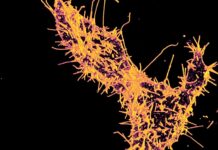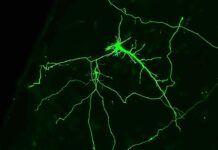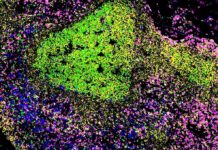Insights Unveiled: Exploring the Integration of HPV and its Connection to Cervical Cancer
In a remarkable stride towards understanding the intricate relationship between human papillomavirus (HPV) infections and cervical cancer, a recent study published in Cell Genomics has unveiled significant insights. Employing a comprehensive multi-omics approach, the researchers embarked on an ambitious journey to classify HPV infections into distinct groups based on their association with tumorigenesis. This groundbreaking research not only holds the potential to enhance care and preventive measures for individuals vulnerable to cervical cancer but also showcases the power of cutting-edge technology in advancing our knowledge.
Grasping the Role of HPV in the Complex Landscape of Cervical Cancer
HPV, the most prevalent sexually transmitted infection in the United States, encompasses a family of related viruses. The focal point of this study was cervical cancer, primarily attributed to or influenced by HPV infection. Although the majority of HPV infections naturally clear up, persistent infections can pave the path to grave conditions such as cervical squamous intraepithelial neoplasia 3 (CIN 3) and, eventually, cervical cancer. The challenge lies in predicting which infections will progress to CIN 3 and cancer, primarily due to the unpredictable integration of HPV into the human genome. Consequently, clinicians often approach every HPV case with caution, considering the potential for cancer development. The study aims to identify integration sites associated with higher risk, offering reassurance to individuals grappling with low-risk infections.
Untangling the Research Findings: A Glimpse into the Study’s Discoveries
The researchers embarked on a sequencing expedition, meticulously examining cervical cancer samples from 98 women. Their goal was to unravel the intricate characteristics of HPV integration points with an unprecedented level of granularity. Adopting a multi-omics approach, the study meticulously compared various datasets to discern productive integration sites associated with severe disease progression and silent integration sites with minimal impact on clinical outcomes. By delving deep into the process of HPV integration into human genes, the researchers managed to decipher the specific sequences linked to disease advancement. Notably, productive integration sites triggered the upregulation of oncoproteins responsible for oncogenesis, whereas silent integration sites heightened the immune response, potentially elucidating the milder cancer and reduced oncogenesis observed in such infections.
Paving the Way for HPV Screening: Unleashing the Power of RNA Sequencing and Proteomics
Leveraging the study’s RNA sequencing and proteomics analysis, the researchers achieved a breakthrough in distinguishing between cervical cancers associated with productive and silent integration sites, as well as HPV-negative samples. Drawing upon these distinct tumor types, they constructed a preliminary predictive model that shows immense promise as a future clinical tool for screening HPV-infected women, aiming to identify precancerous biomarkers. However, it is important to note that further validation with a larger cohort is indispensable before integrating this tool into medical practice. The study’s findings have the potential to shape future endeavors in identifying specific risk factors and biomarkers related to HPV-induced cervical cancer.
Unraveling the Implications: Bridging the Gap for Future Research and Interventions
While current treatment options for CIN 3 or cancerous lesions primarily revolve around surgical interventions, the pathways uncovered in this study could serve as crucial stepping stones towards developing pharmaceutical interventions. By targeting productive HPV integration or preventing its cancer-causing effects, researchers may unlock new treatment possibilities. However, it is vital to underscore the need for further research to validate the study’s findings in the context of precancer ous HPV infections. While numerous questions remain unanswered, this study offers valuable insights into the enigmatic realm of HPV-associated cancer, providing a glimmer of hope for identifying individuals at high risk of developing cervical cancer.
Conclusion: Illuminating the Enigma of HPV-Associated Cancer
In conclusion, the recent groundbreaking study on HPV integration and its connection to cervical cancer has illuminated the intricate factors contributing to disease progression. By delving deep into the specific mechanisms of HPV integration into the human genome, researchers have uncovered high-risk integration sites linked to severe disease progression, as well as low-risk sites with minimal impact on clinical outcomes. This newfound knowledge has the potential to revolutionize care and preventive measures for individuals susceptible to cervical cancer.
While further validation is essential before implementing these findings into clinical practice, the study’s preliminary predictive model holds immense promise as a future screening tool. It could enable the early detection of precancerous biomarkers in HPV-infected women, paving the way for more effective disease management.
Additionally, the study opens exciting avenues for future research and interventions. The identified pathways offer potential targets for pharmaceutical interventions aimed at blocking or preventing productive HPV integration, ultimately reducing the risk of cervical cancer. Further investigations focusing on precancerous HPV infections will play a pivotal role in validating the study’s findings and expanding our understanding of this complex disease.
Overall, this study marks a significant leap forward in unraveling the mysteries surrounding HPV-associated cancer. It not only provides a roadmap for future research but also instills hope for the development of personalized approaches to identify individuals at high risk of developing cervical cancer. With continued advancements in technology and further exploration in this field, we are poised to gain better tools and strategies in the battle against this devastating disease.
Google News | Telegram















